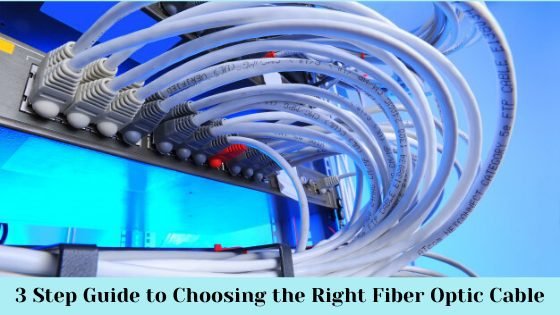
It can be hard for someone to sort through the various fiber optic cables. While it is hard enough to work with copper networking cables, fiber optic cables present an entirely different challenge. Fiber optic cables have numerous applications including small office LANs, data centers, and even transcontinental communication networks. There are even fiber optic cables that cross the Atlantic Ocean! For those looking to choose the right fiber optic cable, there are three steps to follow.
Consider Single-Mode Fiber Optic Cable and Multi–mode Fiber Optic Cable
The first step is to consider the necessary cable “mode.” The two modes and single-mode and multi-mode. These modes dictate how light travels through the cable itself. The two modes are different and not compatible with each other. Single-mode cables cannot handle a lot of data at once; however, they can travel farther. On the other hand, multi-mode cables are larger and can handle more data at once; however, there is a lot of attenuation, making them unsuitable for long-distance use. Therefore, the amount of data being sent through these cables, in addition to the distance, will impact the decision to use single-mode versus multi-mode fiber optic cables.
Think About Indoor Cables Fiber Optic Cable and Outdoor Fiber Optic Cable
Next, consider whether the cables are going to be used inside or outside. The major difference is water-blocking ability. Outdoor cables are designed with added protection from moisture. Because these cables are going to be outside, this added protection is necessary. Indoor fiber optic cables are typically not exposed to the same level of moisture. Therefore, they have been designed to be “tight-buffered” cables. While these cables don’t have the same moisture protection, they are typically easier to work with.
Consider the Jackets
Some cables, such as pre terminated fiber cables, are incredibly versatile and can be used in a number of different environments. On the other hand, for each environment, a different jacket might be required. The traditional jacket is called OFNR and doesn’t contain any metal. These jackets do not conduct any stray electricity and can be used for riser applications. On the other hand, other cards are made with an OFNP jacket, which can be used in drop ceilings and raised floors. Finally, the last jacket type is LSZH, which doesn’t give off any smoke or halogen compounds when burned. Consider which jacket type is necessary for the application.
Choosing the Right Cable
These are a few simple steps to help everyone find the right cable to meet their needs. Take the time to go through these steps and explore all available options. Using the right cable in the right situation will lead to high-quality results.


Leave a Reply